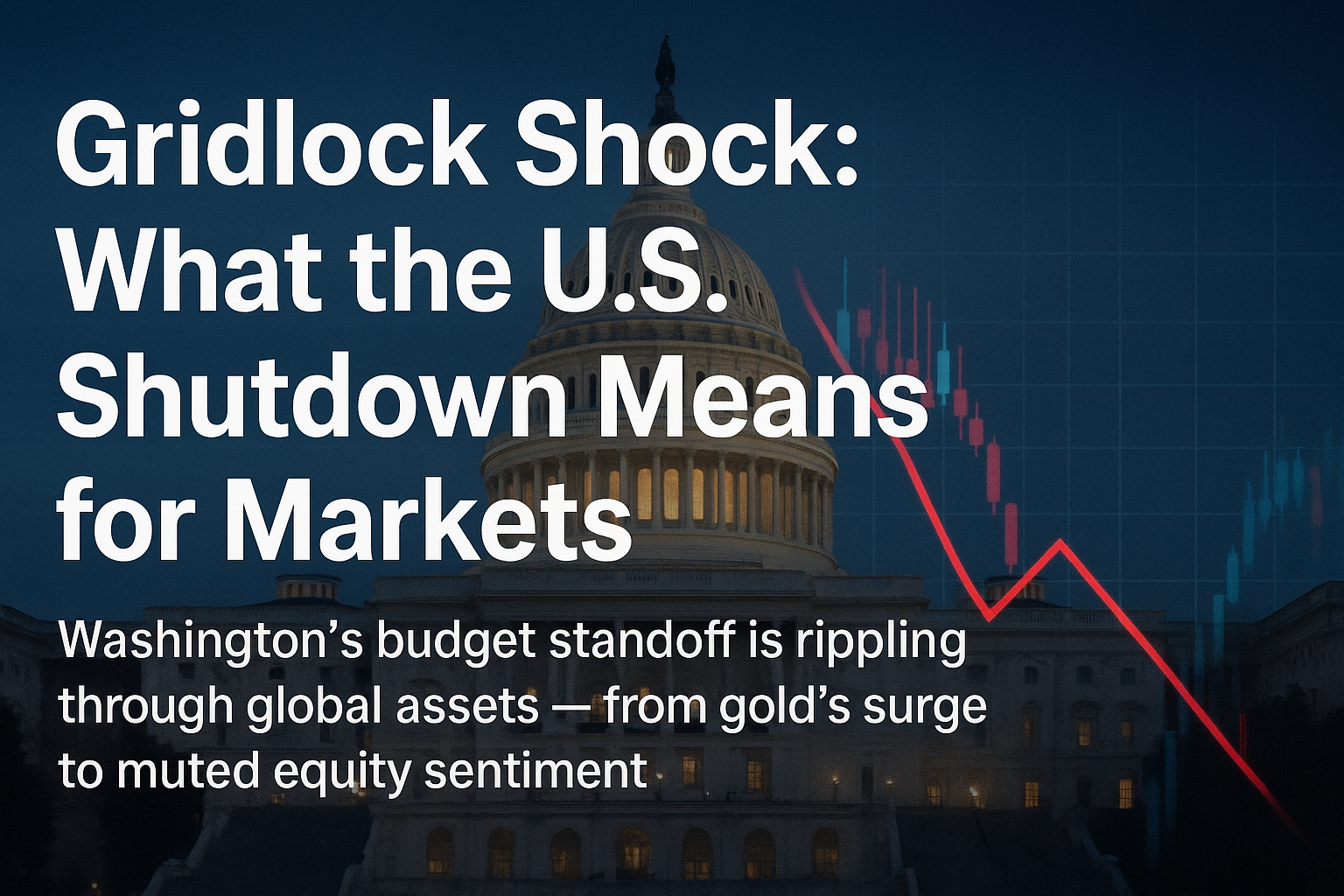Gridlock Shock: What the U.S. Shutdown Means for Markets

Key Takeaways
- Prolonged U.S. government shutdown fuels market volatility, with tech and financials showing early stress.
- Delayed economic data creates uncertainty, clouding Federal Reserve decisions and risking sharper market swings.
- Each week of closure cuts GDP by 0.1–0.2%, threatening earnings, consumer confidence, and dollar stability.
The U.S. government has been shut down since October 1, 2025. At over three weeks, it’s the second-longest shutdown in history. Congress remains deadlocked over spending and healthcare subsidies. No deal is in sight.
For markets, this isn’t just about unpaid federal workers. It’s about the confidence that drives global finance.
What’s Causing the Standoff
A shutdown happens when Congress fails to pass funding bills. Non-essential federal operations halt. Essential services like the military and Social Security continue. But hundreds of thousands of workers are furloughed or unpaid.
This crisis stems from disputes over budget caps and healthcare. Analysts warn it could outlast the 35-day record from 2018–19.
How Markets Are Reacting
Markets started October cautious but steady. Equities dipped early, then stabilized as investors expected a quick fix. Now, volatility is creeping into tech and financials. Treasuries show mixed signals: short-term yields rise with cash-flow worries, while long-term bonds draw safe-haven bids.
Gold, near $4,000/oz, is gaining on this dysfunction premium. Investors still hope for a deal, but time’s running out.
The Data Problem
Shutdowns choke off key economic data. Reports from the Labor, Commerce, and Census departments are delayed. This leaves the Federal Reserve and markets in the dark. Uncertainty breeds volatility.
Economic Fallout
Each week of closure cuts U.S. GDP by 0.1–0.2%, per analysts. Federal contractors and small businesses tied to government projects are hurting. Consumer sectors reliant on federal wages feel the squeeze.
If the standoff hits November, expect:
Weaker corporate earnings guidance.
Declining consumer confidence amid high rates.
Shaky dollar sentiment as global investors question U.S. stability.
Dollar and Gold Outlook
The U.S. dollar remains resilient as the world’s reserve currency. But prolonged chaos could spark doubts about America’s reliability. Gold is attracting safe-haven flows. It’s a quiet bet against fiat stability.
What Traders Should Monitor
Debt Ceiling Risks – Extended talks could raise solvency concerns.
Fed Moves – Missing data may push dovish Fed signals, jolting risk assets.
Volatility Indicators – Watch the VIX and liquidity spreads for stress.
Trade Whispers Take
Shutdowns don’t usually crash markets. But at three weeks, this one’s in dangerous territory. The calm masks fragility. A prolonged stalemate could hit the real economy and jolt markets. Stay alert.
